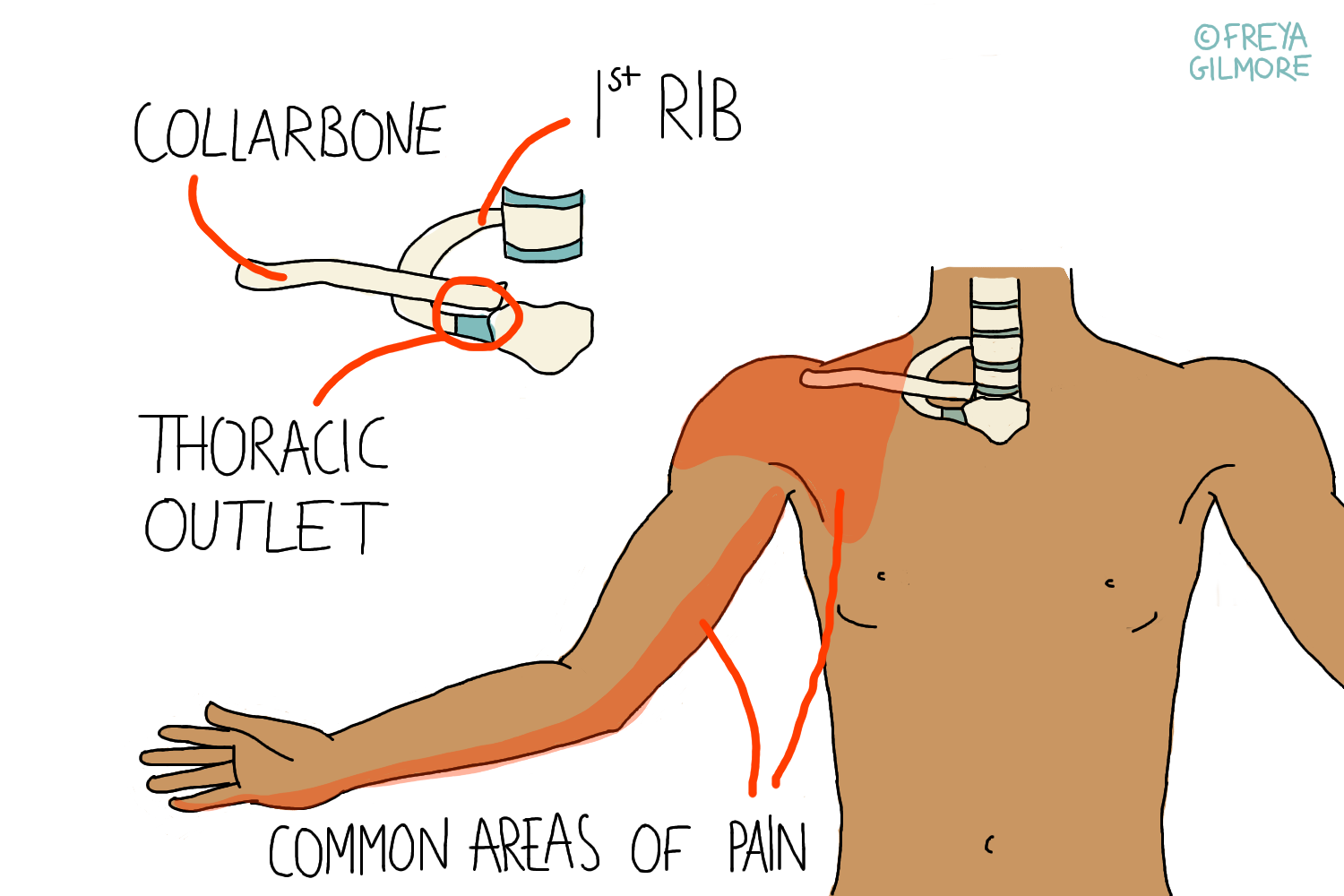

Any combination of these symptoms may be present, and not all are required to have a diagnosis of NTOS. Patients’ symptoms may worsen with activity.
Thoracic outlet syndrome skin#
Cold sensation or changes in the skin color of the arm or hand. Patients may drop objects that they are holding Mild weakness or decreased coordination of the hand. A pins-and-needles sensation or a feeling of numbness in the neck, chest or arm. This pain can be constant or only occur occasionally Headaches or pain that extends to the ear, jaw or face. This pain may involve the neck, the front and/or back of the upper chest, as well as the shoulder and arm. Symptoms can vary greatly from patient to patient and can range from mild to severe with changes from day to day.įor patients with NTOS, pain is the most common symptom. NTOS often dramatically affects the quality of life for both the patient and his/her family. Symptoms of NTOS can be painful, confusing and frustrating for patients. NTOS results from compression of the nerves in the area known as the brachial plexus (a group of nerves that run from the spine and into the neck, armpit region and the arm). The symptoms of TOS depend upon which areas are compressed within the thoracic outlet. The injuries required to trigger symptoms may also be severe, such as a car accident, or subtle, such as a mild injury from arm activity. Some abnormalities may be subtle and difficult to detect, such as abnormalities within the scalene muscles (a group of muscles in the neck, located in the front on either side of the throat) or ligaments within this region. Having some form of injury to the thoracic outlet areaĪnatomic abnormalities may be obvious, such as the presence of an additional rib in the neck (cervical rib) or an abnormality in the spine at the base of the neck. Having abnormal anatomy that creates compression in the thoracic outlet. TOS usually is caused by a combination of two factors: Some patients have symptoms that are caused by compression of both the nerves and blood vessels. The remaining 10% may have symptoms from compression of the subclavian vein (a large vein leading to each arm that brings blood to the heart) or the subclavian artery (an artery leading to each arm that delivers blood from the heart). 
Approximately 90% of all TOS patients suffer from the neurogenic type. There are three types of TOS: neurogenic, venous and arterial. The symptoms resulting from this compression are called TOS. This compression can cause a variety of symptoms depending upon which area is affected. This area is known as the thoracic outlet. Thoracic outlet syndrome (TOS) is an uncommon disorder that results from compression or irritation of the nerves and/or blood vessels at the base of the neck and front of the chest underneath the collarbone. Billing, Insurance & Financial Assistance.






 0 kommentar(er)
0 kommentar(er)
